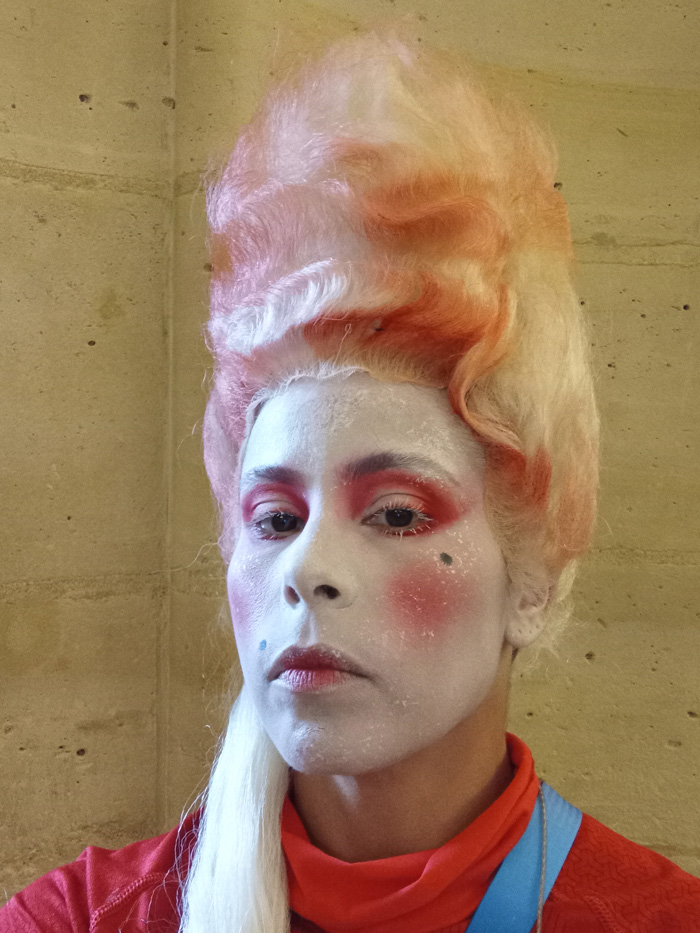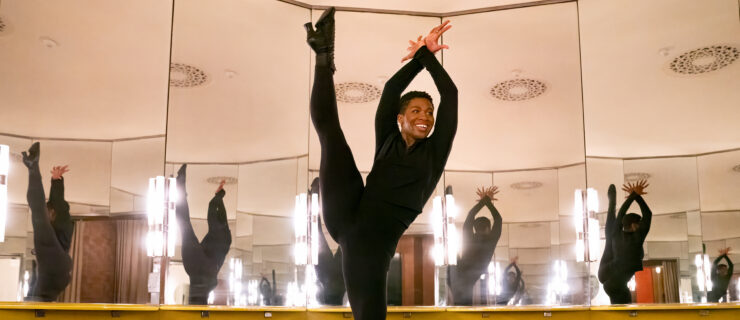A Strike Threat, Scaffolding, and Last-Minute Changes: What It Was Like Dancing in the Olympic Opening Ceremony
Ballet de Lorraine’s Tristan Ihne has been dancing professionally for nearly two decades. But on July 26, he gave a performance unlike any he’d done before: Along with about 200 other dancers, he danced atop a golden platform filled with water next to the Seine river in an 8-minute piece by Maud Le Pladec, as part of the Olympic Opening Ceremony in Paris.
“The best part for me was to feel the energy of the group,” he says. “Here we were together with generations mixed and training styles mixed. It was amazing.” He’d never taken part in such a large performance, or danced for such a massive global audience. “There’s nothing to compare it to,” he says.
That group energy led not only to a memorable spectacle but also to a different kind of French tradition: the threat of a strike, filed by the French performing artists’ union SFA-CGT. When the dancers began rehearsing together a few days before the ceremony, they realized the amount they were being paid for broadcast rights varied widely—from 60 to 1,600 euros. The protesting dancers also wanted traveling and housing expenses paid for. “The collective agreement specifies that if you hire someone coming from more than 40 kilometers away, they should get their expenses covered,” says Ihne, who participated in the protests. In the end, event organizers met some of the demands, and the dancers dropped their threat to strike.
Dancer Magali Brito—a performer with aerial dance troupe Compagnie Retouramont, which performed during the ceremony on the scaffolding of the Notre Dame Cathedral and with the heavy-metal band Gojira in beheaded Marie Antoinette costumes—says that while she feels for the dancers, their raise seemed relatively minor compared to bigger issues surrounding the Games. “I would have liked to have a strike about the rights of a lot of people in Paris that were completely distorted,” she says, highlighting the thousands without permanent housing who were sent out of Paris ahead of the Games.

Still, she was happy to take part in the ceremony—even if not everything went exactly to plan. For instance, Brito says she and the other dancers of Retouramont were supposed to be suspended along the walls of the building during the Gojira concert. “But after security problems, they didn’t authorize us to be hanging on the walls, so we just did some poses in the windows with costumes,” she says.
There was also the infamous rain during the ceremony, which caused major problems in particular for dancers of the Moulin Rouge, who were performing on a slick surface right at the edge of the river. “For us, it was okay because we were going to perform in the water anyway,” Ihne says. “But for other dancers, it made it more difficult—I give them even more credit.”
Brito says that for her and many of the dancers, any extra challenges were worth it to take part in a ceremony that made such a statement. “Politically, it was quite important to be able to participate in this event,” she says. “In France, we just had new elections, and it felt good to be able to take part in something showing people of every color, every body type, and every gender.”




